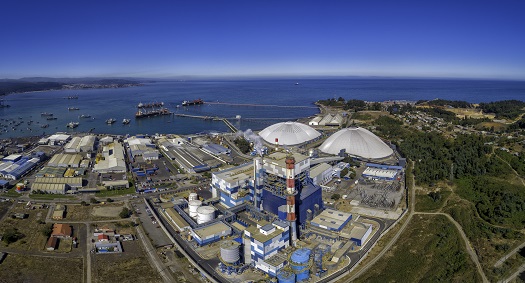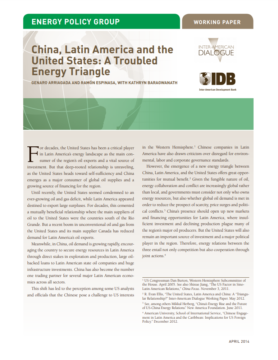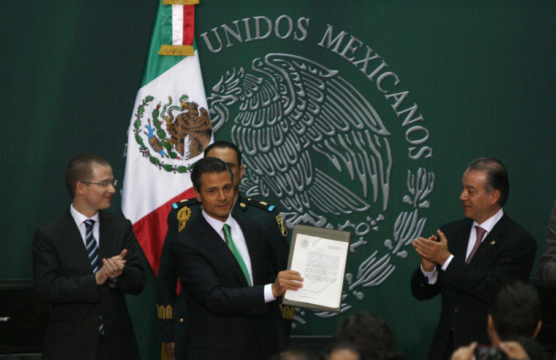
Navigating Risk in Brazil’s Energy Sector
Brazil’s oil and gas and electricity sectors are an important destination for Chinese direct investment.
A Publication of The Dialogue
Chile’s energy commission in July approved Enel Generación Chile’s plan to disconnect the second unit of the Bocamina coal-fired plant in May 2022, 18 years earlier than originally planned. The company is also set to take the first unit of the plant offline this year. Meanwhile, plans are underway for the construction of Chile’s first hybrid industrial plant, which will include both a solar power plant and a wind farm. How meaningful are these recent announcements in the context of Chile’s overall energy matrix and its goals to use more renewable energy sources? What is the status of Chile’s renewable sector today, and how has it changed over the past 10 years? To what extent has the global economic crisis affected progress in the country’s energy transition, and is Chile on track to become carbon-neutral by 2050, as it has pledged?
Andrés Rebolledo, dean of the business department of USEK Chile and former energy minister of Chile: “Chile continues to deepen its energy transition toward a more sustainable electricity generation matrix with a high participation of renewable energies, especially solar and wind. In the last five years, these sources have gone from representing 4 percent of the installed capacity in the country to 24 percent this year. This change has been the result of a profound regulatory reform that gave signals to markets and gave way to the growth of investment in these areas, as well as technological changes that have caused a significant drop in the cost of renewable technologies. Another important factor that has allowed the acceleration of the transition is the agreement reached between the previous government and the main generating companies and owners of coal-based assets to close these plants in the context of a programmed plan, whose terms were brought forward during the current government. This is a ratification that in Chile there is a consensus that the country’s potential and greater competitiveness is in the use of its renewable sources, in which it has significant comparative advantages due to the quality of its solar and wind resources. The current challenge is innovating in renewable technologies that allow us to continue deepening this transition, lowering energy costs and ensuring the operation of the electric system. In this sense, it is interesting to see the development of innovations such as thermal generation solar plants (CSP), solar pumping plants, hybrid plants with different renewable technologies and those that include storage batteries.”
Ricardo Raineri, former energy minister of Chile and former president of the International Association for Energy Economics: “The disconnection of coal power plants is in line with the country’s commitment to have 20 percent of electricity coming from nonconventional renewable energy, or NCRE, by 2025 (which Chile has already nearly met, ahead of schedule by five years), the plan to phase-out coal power plants by 2040, and the agreement signed in COP-25, with nine other Latin American and Caribbean countries, to reach an average of 70 percent of renewables in generation capacity by 2030. Chile has exceptional conditions for the deployment of NCRE, whose prices have fallen and are competitive, with modular and lower upfront investment costs, and with environmental and social licensing that is easier to obtain. However, the main challenge with NCRE is its variability, as it happens, for example, with solar and wind generation. But currently, technological progress has allowed us to cope with increasing volumes of variable electricity generation. The energy sector is the main carbon dioxide emitter (78 percent), because of coal, gas and diesel for electricity generation (32 percent) and liquid fuels for transport (24 percent). But the country also has important sources for greenhouse gas (GHG) absorption, Land Use, Land Use Change and Forestry (LULUCF), which absorbs about 59 percent of the other sectors’ GHG emissions. Thus, supporting NCRE and forestation, among others, the country is in an excellent position to become carbon neutral by 2050. Because of Covid-19 and citizenry confinement, normal operations have experienced delays everywhere, but in Chile, the appetite to invest in the sector has remained steady. This year, more than 200 NCRE projects submitted a request for an environmental license, and new projects expected to be connected during 2020 account for almost 20 percent of installed capacity, mostly wind (1,241 megawatts) and solar (2,182 megawatts).”
Rodrigo Andrade, regional director of Diálogo Energético Latinoamericano: “The closure of the Bocamina coal plant by Enel ahead of schedule is great news, both for the energy industry and for the environmental and climate movement. It responds to variables ranging from the increasing demands of energy industry investors for their global assets, as well as to the country context, in which citizen pressure, in the face of so-called environmental sacrifice zones, is increasing. In addition, there are favorable market factors for the renewable energy sector, which in Latin America has grown by 5 percent, even in the context of a pandemic, and the stimuli for economic recovery are strongly based on ‘green’ economies focused on clean energy, in a country that knew how to make a timely, competitive and well-oriented transition. This was especially so in the previous government, during which the foundations and auctions of projects that are being built today were laid. From the point of view of the energy matrix, NCREs have multiplied by seven in the last eight years, a share that can grow several times more if the exit of fossil fuel-powered plants from the system is accelerated, which could be done if the current government proposed it. In addition, the country’s first solar thermal power plant (CSP) came into operation, and a second is announced, which could become the region’s great technological novelty as it transforms renewables, criticized for their intermittency, into base energy for the electric system and the solution for a definitive transition to 100 percent renewable energy.”
Cecilia Aguillón, director of the energy transition initiative at the Institute of the Americas: “The developments and announcements from Chile are indeed meaningful. The closure of Enel’s Bocamina coal-fired plant should come as no surprise given both the country’s and the firm’s commitment to decarbonizing their generation sources. The decision to switch from carbon-based to renewables-based power underscores that it’s good for the economy and the environment. It also reaffirms Chile’s hemispheric leadership on renewable energy and combating emissions and climate change. Indeed, Chile has been a leader in Latin America in the deployment of renewable energy technologies for several years. In fact, the Chilean Energy Ministry has indicated that investments in renewable energy will be part of the economic recovery from the present health crisis, as this will attract investments, modernize and decarbonize its grid, create jobs and spur innovation in clean technologies. The costs of solar and wind are now even lower than conventional energy. In many cases, producing solar and wind electricity is actually cheaper than generating energy from coal. As a native resource, renewable energy does not have to be shipped, combusted or processed. It is transmitted or distributed as electricity from the production point using transformers to adjust voltage and/or inverters to change from direct current to alternate current. Chile’s latest renewable energy developments also undergird the fact that the sources have proved to be faster to develop and cheaper to maintain. Enel’s expedited effort to close the Bocamina plant moves Chile closer to achieving its carbon-neutral goal by 2050 and brings a great deal of positive attention to its green recovery.”
María Trinidad Castro Crichton, executive director of the World Energy Council, Chile: “For Chileans and in particular for the World Energy Council and WEC Chile, the closure of Bocamina plant in 2022 is excellent news as our organization promotes a sustainable energy system for the benefit of all people. In this sense, the advancement and acceleration of the decarbonization plan is a great and important step toward the goal of decarbonization, considering the public-private commitment toward these objectives. The renewable energy sector has had a very significant experience in the last 10 years. By the end of this year, more than 20 percent of Chile’s energy matrix will be made up of renewable energies, especially solar. Carbon neutrality for 2050 is more than an idea; it is a path. Of course, it is not without difficulties, but it is a certain path where all actors have a strong commitment and can work together to achieve this great goal. At WEC Chile we collaborate with this purpose, and we are convinced that in collaboration with all sectors, the dream of carbon neutrality will be a reality, and we hope to achieve it before the proposed date.”
 The Latin America Advisor features Q&A from leaders in politics, economics, and finance every business day. It is available to members of the Dialogue’s Corporate Program and others by subscription.
The Latin America Advisor features Q&A from leaders in politics, economics, and finance every business day. It is available to members of the Dialogue’s Corporate Program and others by subscription.
Brazil’s oil and gas and electricity sectors are an important destination for Chinese direct investment.
The US’ standing as the main consumer of Latin America’s oil exports is unraveling as China emerges as a major consumer of global oil supplies.
The results of Mexico’s energy reforms may fall well short of government promises and public expectations.
 The coal-fired Bocamina plant in Chile, pictured above, is set to close completely by 2022, 18 years ahead of schedule. // File Photo: Chilean Government
The coal-fired Bocamina plant in Chile, pictured above, is set to close completely by 2022, 18 years ahead of schedule. // File Photo: Chilean Government

 Video
Video